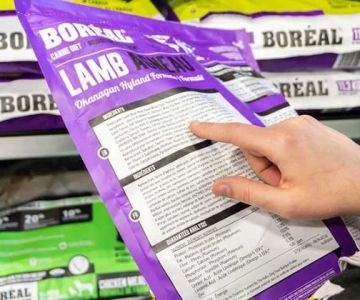
Why Some Pets Reject New Food & How to Smooth the Transition
- 1. Why Do Pets Reject New Food?
- 2. Common Reasons Pets Reject New Food
- 3. How to Smooth the Transition to New Food
- 4. Step-by-Step Guide for Introducing New Food
- 5. Practical Tips and Stories from Pet Owners
- 6. Recommended Pet Foods for a Successful Transition
1. Why Do Pets Reject New Food?
Just like humans, pets can be particular about their food preferences. A pet rejecting new food is not uncommon, and it can be frustrating for pet owners who are trying to make a dietary change for health or other reasons. There are several reasons why pets might resist new food. Some of the most common reasons include:
2. Common Reasons Pets Reject New Food
Understanding why pets may turn their noses up at new food is key to making the transition easier. Here are some of the main factors:
- Familiarity and Comfort: Pets are creatures of habit and often prefer the familiar taste, texture, and scent of their usual food.
- Texture Sensitivity: Some pets are very sensitive to textures. If the new food has a different texture than what they’re used to, they might refuse it.
- Health Issues: If a pet is not feeling well, they may not have the appetite to try new food. Always check with a vet if the refusal lasts for several days.
- Overfeeding or Free Feeding: Overfeeding or leaving food available all the time might cause pets to eat less out of boredom or because they are already satisfied.
- New Food’s Smell or Taste: Some new foods may have a stronger odor or different flavor profile that pets are not accustomed to, leading them to reject it outright.
3. How to Smooth the Transition to New Food
Transitioning pets to new food requires patience and a well-thought-out strategy. Sudden changes can lead to digestive upset and frustration. To help your pet accept new food smoothly, here are a few tips:
- Gradual Introduction: Start by mixing a small amount of the new food with the old food. Gradually increase the proportion of new food over several days or weeks until your pet is fully transitioned.
- Consistency is Key: Keep meal times consistent and offer the new food at the same times each day. Pets are creatures of routine and will come to expect the food.
- Positive Reinforcement: Praise your pet when they try the new food, and consider offering treats or a favorite toy after they eat to associate the change with positive outcomes.
- Warm Up the Food: If your pet is hesitant, try warming up the new food to release its aroma, making it more appetizing.
- Monitor Portion Sizes: Don’t overfeed, as this can lead to your pet becoming full too quickly, leaving little room for new food.
4. Step-by-Step Guide for Introducing New Food
A structured approach can help reduce stress for both you and your pet. Here’s a step-by-step guide to introducing new food to your pet:
- Step 1: Choose a high-quality, well-balanced pet food that suits your pet’s dietary needs. Research the ingredients and consult with your vet if necessary.
- Step 2: Begin mixing the new food with your pet’s current food. Start with 25% new food and 75% old food for the first 2–3 days.
- Step 3: Gradually increase the amount of new food over the next week, reducing the old food portion to 50% new and 50% old.
- Step 4: Continue adjusting the food mix until your pet is eating 100% of the new food. This could take anywhere from 1 to 2 weeks depending on your pet’s comfort level.
- Step 5: During the transition, monitor your pet’s appetite and digestive health. If there are any signs of discomfort, slow down the transition or consult your vet.
5. Practical Tips and Stories from Pet Owners
Many pet owners have experienced the challenge of introducing new food. Here are a few practical tips and stories shared by pet owners:
- Mary’s Experience: “My dog, Max, was really picky about food. I started with mixing his old food with just a teaspoon of the new food. Over time, he got used to it and now he loves it. Patience is key!”
- John’s Tip: “I found that adding a bit of low-sodium chicken broth to my cat’s new food made the transition smoother. She’s much more willing to try new things now.”
- Jessica’s Advice: “For my picky eater, I used a food topper with the new food. It helped to make the new food more exciting and flavorful for her.”
6. Recommended Pet Foods for a Successful Transition
When choosing the right food to introduce to your pet, consider the following options that are known for being easy to transition to:
- Hill’s Science Diet: A trusted brand offering a variety of flavors and formulas for both dogs and cats, known for easy digestion and palatability.
- Royal Canin: Known for its high-quality ingredients, Royal Canin offers specialized food based on breed, size, and health conditions.
- Wellness Core: A natural, high-protein food for both dogs and cats that can appeal to pets with sensitive stomachs.
- Blue Buffalo: Offering both dry and wet food options, Blue Buffalo is known for using natural ingredients that are gentle on your pet’s stomach.
For more tips and to find the best food for your pet, be sure to visit Pet & Puppy for a variety of recommended options.








 Blue Cross Veterinary Clinic4.0 (225 reviews)
Blue Cross Veterinary Clinic4.0 (225 reviews) GoodVets Paradise Valley4.0 (117 reviews)
GoodVets Paradise Valley4.0 (117 reviews) VetMED Emergency & Specialty Veterinary Hospital4.0 (1513 reviews)
VetMED Emergency & Specialty Veterinary Hospital4.0 (1513 reviews) Pat's Pet Clinic4.0 (151 reviews)
Pat's Pet Clinic4.0 (151 reviews) Cornerstone Animal Hospital4.0 (211 reviews)
Cornerstone Animal Hospital4.0 (211 reviews) Oldham County Veterinary Services, LLC4.0 (209 reviews)
Oldham County Veterinary Services, LLC4.0 (209 reviews) How Often Should You Change Your Pet’s Diet? A Vet’s View
How Often Should You Change Your Pet’s Diet? A Vet’s View Natural Remedies vs Vet Treatments: Making the Right Choice for Your Pet
Natural Remedies vs Vet Treatments: Making the Right Choice for Your Pet How to Stop Excessive Barking: Tools & Training Tips for Dogs
How to Stop Excessive Barking: Tools & Training Tips for Dogs How to Transition a Senior Pet to Easier-to-Eat Food: A Comprehensive Guide
How to Transition a Senior Pet to Easier-to-Eat Food: A Comprehensive Guide The Role of Probiotics in Pet Health: Should You Supplement?
The Role of Probiotics in Pet Health: Should You Supplement? How Pet Startups Are Disrupting Traditional Vet Care
How Pet Startups Are Disrupting Traditional Vet Care